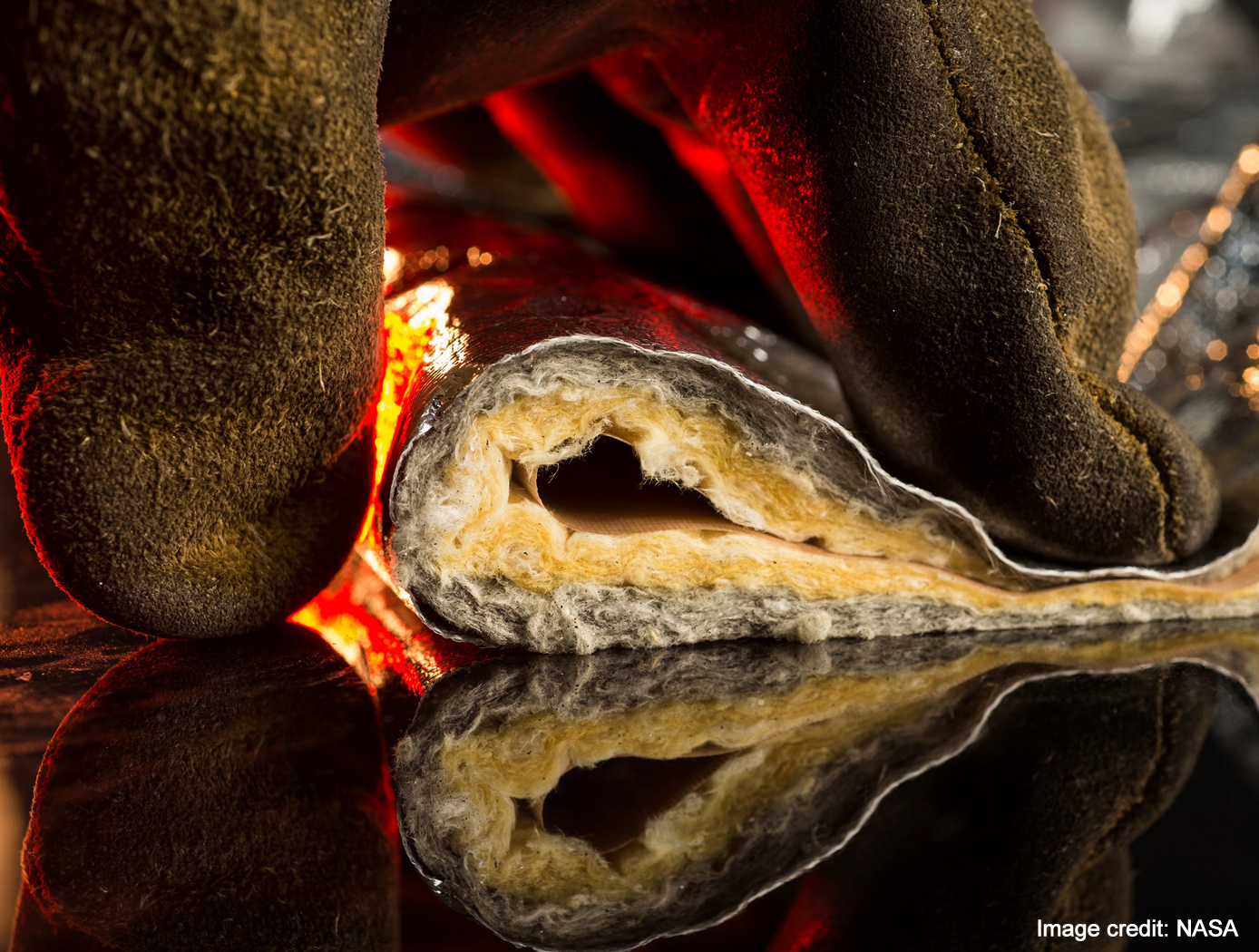
Did you know you can use technologies developed for space for your business? The NASA Technology Transfer program has one major goal: bring NASA technology down to Earth. We patent technologies and innovations our researchers have developed during their mission work so companies, startups and entrepreneurs can spin them off into new commercial products.
NASA scientists have created all sorts of materials and coatings – in fact, it is one of the most licensed categories in our patent portfolio. From materials that improve industrial and household products to coatings and insulations that protect satellites, machinery and firefighters, our technologies offer smart solutions for modern challenges.
These are a few of our most in-demand NASA technologies.
Smart Coating for Corrosion Detection and Protection
Looking for a technology to ward off corrosion that’s also safe for the environment? Researchers at NASA’s Kennedy Space Center have done just that. Dating back to the Space Shuttle era of NASA, this technology can prevent corrosion and can also be painted on already-corroded surfaces to “heal” and protect it going forward. With commercial potential in building safer bridges, automobiles and machinery, it’s no wonder it has been licensed 7 times.
Aluminum Alloy for High Temperature Applications
With a whopping 9 licenses to its name, this award-winning NASA tech was initially developed by researchers at NASA’s Marshall Space Flight Center to meet U.S. legislative restrictions on vehicle exhaust emissions. This special alloy can stand up to more wear and tear than other aluminum alloys and can be currently found in offboard motors for fishing boats; however, it has applications in all kinds of different engines.
Particle Contamination Mitigation Methods
Made by innovators at NASA’s Langley Research Center, this tech was first created for exploration on dusty, dirty surfaces like the Moon, Mars and asteroids. Lunar dust has been shown to cause big problems with mechanical equipment, like clogging filters and damaging seals. This technology can be included in the production of films, coating and surface treatments to create dust-resistant and self-cleaning products for biomedical devices, aircraft, cars and much more. With 3 licenses already, this tech could be a game-changer when battling dirt and grime.
Thermal and Environmental Barrier Coating System
High heat can lead to big trouble for mechanical components. A cutting-edge environmental barrier coating system was developed at NASA's Glenn Research Center to battle damage on gas turbine engines. The design of this tech makes for a stronger and more durable coating that doesn’t require a special, potentially-costly, manufacturing method. It can be used anywhere from furnace and engine parts, to nuclear reactors.
Still want more? We’ve identified a handful of materials and coatings that haven’t quite made it to the mainstream – but we think they have the potential to be game-changers for startups and companies.
High-Performance Polyimide Powder Coatings
Created for launch pads and ground systems for missions like the Space Shuttle, this powder coating technology can be used in machinery, pipes and anywhere there is exposed metal parts that need protection from high heat and corrosion. Researchers at NASA’s Kennedy Space Center created this impressive polyimide powder coating with a much lower melting point than other materials used for insulation, meaning it can take the heat while also protecting against chemical damage.
Multilayered Fire Protection System
Made to protect astronauts and vehicles during the dangerously hot task of reentry, scientists at NASA’s Langley Researcher Center have developed a flexible, lightweight and portable thermal protection system that can serve as a personal emergency fire shelter. The flexible technology is made up of multilayer thermal blankets designed to handle external temperatures of up to 2,000°F – that’s as hot as magma found in some volcanos. The system can be formed as a sleeping bag, a tent, a blanket, a vertical barrier, a curtain, a flexible roll-up doorway or a wrap.
Oil-Free Lubricants
Not all lubricants are liquids: think the non-stick coating on a frying pan. Truly in a class of its own, innovators at NASA’s Glenn Research Center have created solid lubricant materials to reduce friction and wear in mechanical parts, especially in extremely high heat. Its unique combination of excellent long-term durability, exceptional friction and wear-reducing characteristics – the list goes on and on – makes it stand out among solid lubricants.
High-Strength Super Elastic Compounds
NASA needed a better material than iron or steel to prevent corrosion and rust in the International Space Station’s wastewater treatment system. Enter: NASA’s high-strength super elastic compounds. Shock-proof, light-weight, durable and immune to rust, this NASA tech has tons of applications in ships, machines, industrial knives and cutters, and engine bearings here on Earth. They also don’t chemically degrade or break down lubricants, a common problem with existing bearing materials.
Interested in licensing the tech mentioned above? Follow the links to apply through our website. You can also browse our entire materials and coatings portfolio here.
Follow the NASA Technology Transfer Program on twitter @NASAsolutions for the latest updates on technologies available for licensing, and watch the video below to hear directly from NASA researchers why NASA's material and coatings technologies are ready to meet your company's greatest challenges.



